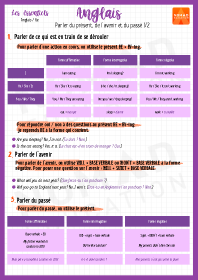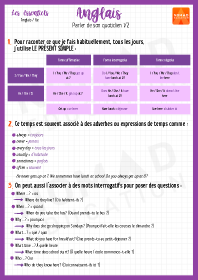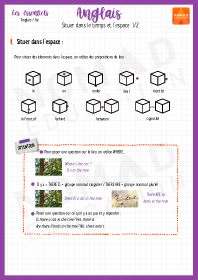Les verbes "to be" et "to have" au présent
Le verbe "to be"
Le verbe to be est un cas particulier, il se conjugue ainsi au présent (am, is, are) : I am, you are, he is, she is, it is, we are, they are. Il n'est jamais accompagné par un auxiliaire.
Le verbe "to have"
Le verbe to have n'a que deux formes au présent (have/ has) : I have, you have, he has/she has/it has, we have, they have.
Significations
To be signifie être alors que to have signifie avoir.
Différences d'usage entre le français et l'anglais
Il existe quelques différences d'usage entre les deux langues car on dit parfois les choses de manière différente :
| Anglais | Français |
|---|---|
| How old are you ? - I am 12 years old. | Quel âge as-tu ? J'ai 12 ans. |
| He is hungry. | Il a faim. |
| She is cold / hot. | Elle a froid / chaud. |
| They are lucky. | Ils ont de la chance. |
| I am right and you are wrong. | J'ai raison et tu as tort. |
| It is not right. | Ce n'est pas correct. |
| The dog is thirsty. | Le chien a soif. |
| There are twenty pupils in the classroom. | Il y a vingt élèves dans la classe. |
| How are you ? – I am fine thanks | Comment vas-tu ? Je vais bien merci ! |
She has a cold = elle a un rhume !




